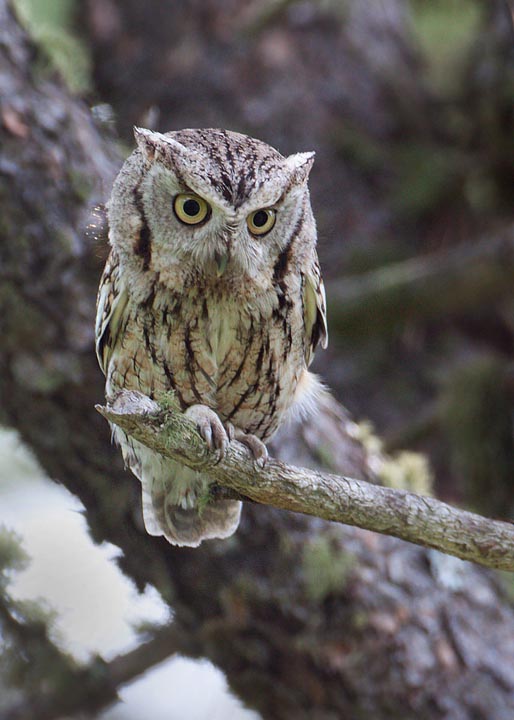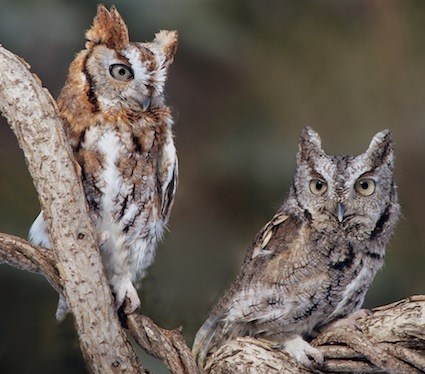 |
| wildphotosphotography.com |
The Eastern Screech Owl is one of the more common small owls in the Northern Colorado region. In fact, it's one of the more common small owls in the eastern United States. The northeastern corner of Colorado is one of the western-most points of their range (Montana and Texas also have population bands of these owls). West of here, the Eastern Screech Owl population fades into the Western Screech Owl population. I've never seen one myself, but I hear they're very similar in appearance. In fact, though there are ~23 species of Screech Owl (exclusive to the Americas), they all look remarkably similar.
Eastern Screech Owls are small, tufted owls that live in forested areas. Their feather patterns allow them to blend into trees easily. There are two color varieties of Eastern Screech Owls, referred to as 'morphs': the grey morph and the red morph. The red morphs make up ~1/3 of the population, but are far more common out east. Their ear tufts are sometimes held flat, and sometime held upright. As with the other tufted owls, these tufts help break up their silhouette so they can better blend into trees.
 |
| allaboutbirds.org |
Being so small (only 6-10 inches long, with a wingspan just under 2 feet, and weighing half a pound at most), Eastern Screech Owls don't catch terribly large prey, but they might catch larger prey than you'd think. While small rodents and big insects are the most common, with a smattering of songbirds on the side, Eastern Screech Owls are quite capable of killing rabbits and grouse.
The Screech Owl actually doesn't make much of a screeching noise. Its common vocalizations can be heard at this website. Often times, because these birds are so small and camouflaged, the only way to find one is to hear it at night.
 |
| urbanhawks.blogs.com |
 |
| naturefriendmagazine.com |
Thanks again for taking the time to read this blog of mine. I just checked the numbers, and page-views on reached 20,000 today! It was just six weeks ago that I was over-the-top excited about reaching 10,000 posts, so getting another 10,000 in such a short period of time has me surprised and thrilled. Tune in next week to learn about the Saw-Whet Owl. After that we'll only have a couple of owls species to look at, and then I'll need a new topic to focus on. If you have any ideas, shoot them my way in a comment or email (talonsofdoom@gmail.com). Just a reminder, you can follow me on Twitter @RaptorProgram, check us out on Facebook (Rocky Mountain Raptor Program), and find out more information and stories on our main website (which is brand new and shiny!). If you would like to subscribe to this blog, use the box in the toolbar to the right. Thanks for reading and supporting the RMRP!

No comments:
Post a Comment